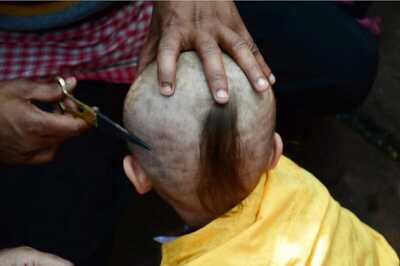
views
The deadly dengue fever has spread in parts of Nepal with five people found infected in the district of Kanchanpur. Dengue is a mosquito-borne viral infection, which occurs during monsoon, and causes severe flu-like illness. Sometimes, a potentially lethal complication called severe dengue can also occur if the disease is not diagnosed and treated in time.
The incidents of dengue have increased 30-fold over the last 50 years. Up to 50-100 million infections are now estimated to occur annually in over 100 endemic countries, putting almost half of the world’s population at risk.
Khabar Hub reports that vector control inspector at the Sudur Paschim State Health Directorate, Hemraj Joshi said three people have been found infected with dengue virus at Bedkot, one person in Krishnapur municipality and one has reached Mahakali Zonal Hospital for treatment.
Those infected in Bedkot are undergoing treatment at nearby private hospitals in India and the one infected in Krishnapur is receiving treatment at the Seti Zonal Hospital Dhangadhi.
Joshi further informed Khabar Hub that so far 20 dengue patients have been found in the Sudur Paschim State this year. As per the data maintained by the Sudur Paschim State Health Directorate, one dengue was found in the state in 2017 and seven dengue patients were found in 2018.
He said dengue infection which was seen mostly in the urban areas has now been found in rural areas as well. Mostly those people returning from India are found to be infected with this disease.
The Aedes aegypti mosquito is the main vector that transmits the viruses that cause dengue. The viruses are passed on to humans through the bites of an infective female Aedes mosquito, which mainly acquires the virus while feeding on the blood of an infected person. The full life cycle of dengue fever virus involves the role of mosquito as a transmitter (or vector) and humans as the main victim and source of infection.
Severe dengue (previously known as dengue haemorrhagic fever) was first recognized in the 1950s during dengue epidemics in the Philippines and Thailand. Today it affects Asian and Latin American countries and has become a leading cause of hospitalization and death among children and adults in these regions.

















Comments
0 comment